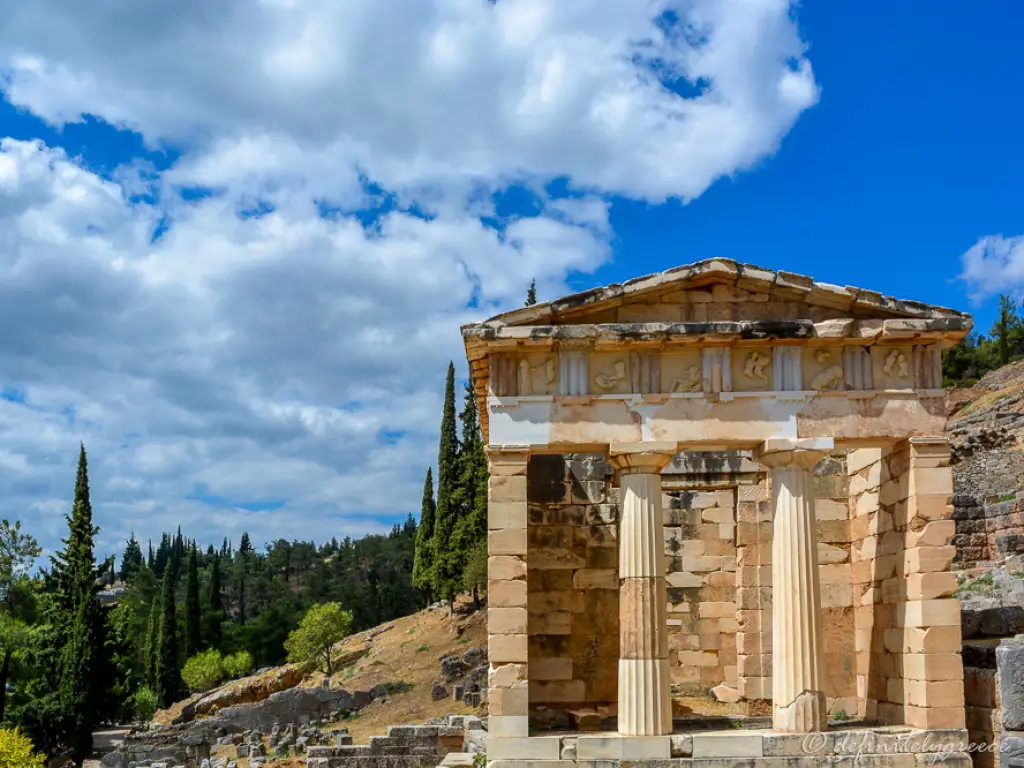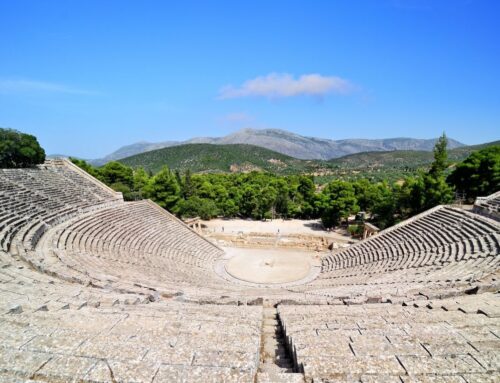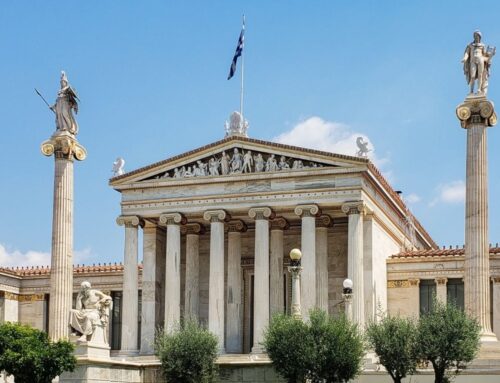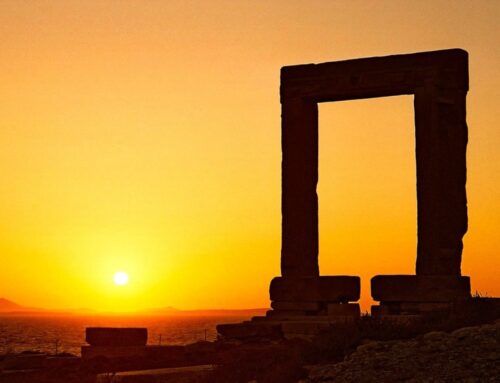Delphi Magic: An Adventure To The Breathtaking Sanctuary Of Apollo
Delphi Magic: An Adventure To The Breathtaking Sanctuary Of Apollo

☞ Table of Contents:
Nestled high in the foothills of Mount Parnassus in Delphi lies the Sanctuary of Apollo.
Up here you’ll be caressed by a cool mountain breeze which provides a welcome relief from the scorching Greek summer weather. You’ll gaze into a gorge carpeted with olive trees and wonder at the magic that is Delphi. While Greece is home to countless archaeological wonders, such as the Acropolis in Athens, many call this treasure in Delphi the most important historical site of all.
☞ Related: The Best Way To See The Acropolis In Summer
The Sanctuary of Apollo dates back to Mycenean times with evidence of occupation as early as 1500 BC. However, the cult culture of Apollo that Delphi is so well known for began in the 8th century BC. Apollo is the God of light, poetry and music and the sanctuary was home to the Pythian games dedicated to Apollo, which involved competitions in both theatre and sport. At the sanctuary, you will be able to see the theatre and stadium in which they were held.
☞ Related: 5 Olympian ‘Gods’ And Their Greek Island
The Magic Of The Oracle
Delphi was, and still is, famous for its oracle or Pythia.
The presence of this oracle in Delphi has been recorded for hundreds of years. From 1400 BC to 381 AD Delphi maintained various oracles. The Pythia was always a woman and a revered member of ancient Greek society as she had the ability to channel the God Apollo. Her presence made Delphi a place of pilgrimage in ancient times. Leaders, kings and common folk would come from far and wide to consult the oracle on anything from decisions in warfare to matters of the heart. In the temple of Apollo the oracle would sit upon a tripod and in a trance state recite the prophecies of Apollo himself.
Unravelling The Mystery
Much of what we know about the oracle of Delphi is thanks to Plutarch, a philosopher and priest at the temple of Apollo in the first century AD. In his writings, he attributed the possessed state of the oracle to vapours that were released from within the temple. More recent geological findings confirm Plutarch’s belief. The temple of Apollo is in fact situated right above a sacred chasm emitting what is now identified as ethylene, a sweet-smelling gas with hallucinogenic properties.
☞ Related: A Simple Guide To The Most Famous Greek Philosophers
Archaeological Museum Of Delphi
The archaeological museum of Delphi is one of the most visited museums in all of Greece. Situated right next to the Sanctuary of Apollo you’ll see the treasures that were unearthed from the site, many of which were offerings to the Gods. Delphi was an extremely popular pilgrimage, with copious visitors, so being seen by the priestess was a matter of priority. The bigger and more grandiose the gift, the higher the order in which you were received. In 560 BC the wealthy island of Naxos donated a towering sphynx statue atop a column 12.5 meters high. Inscribed on the base of the column is how they were given the privilege of promanteia, enabling them priority when being seen by the oracle. You will see this magnificent sphynx in the museum.
As if a giant statue wasn’t enough of an offering some cities built treasuries on the site. The reconstructed treasury of the Siphnians can be seen at the Sanctuary of Apollo. The Siphnians being a wealthy island, thanks to gold and silver mines, constructed this treasury entirely out of marble as a token of gratitude for the God Apollo. The remainder of the frieze for this treasury can be found in the museum. Along with these fascinating finds are the twins of Agros, Kleobis and Biton. These statues are the oldest found at Delphi dating back to the 6th century BC. The Charioteer of Delphi is another rare find, and one of the best of the very few bronze sculptures that have survived from ancient Greece.
The Delphic Maxims
Delphi is also known for the Delphic maxims. Legend has it that the oracle received these maxims at the Sanctuary of Apollo from the God himself. Seeing the importance of the wisdom she was providing, a group of seven sages began documenting these aphorisms. There are 147 maxims in total which became doctrines that were reflected in the belief system of ancient Greeks. The most famous, ‘know thyself’ and ‘nothing in excess’, were written on the pediment of the temple of Apollo. Rather than being an absolute, they were merely guidelines on how to live in a self-disciplined and honest way.
Despite the oracle and her prophecies having a scientific explanation, the magic of Delphi still remains. No one was obliged to follow the oracle. Ancient Greeks believed they could create their own path, while gratefully accepting some advice along the way. This rise in individuality, that was at the heart of the Greek people, foreshadowed the abolition of totalitarian rule and the rise of democracy. The Sanctuary of Apollos significance lives on today and retains its name as a place of pilgrimage, no longer for ancient Greeks, but for modern-day tourists, like you and me, who wish to uncover and learn the mystery of this mountainous marvel.
- Has the magic of Delphi compelled you to take a visit? If you’ve already been let us know what you thought!
*Disclaimer: This page includes affiliate links. If you decide to book something through one of them, I might get a little bonus, but it won't cost you anything extra.*



























